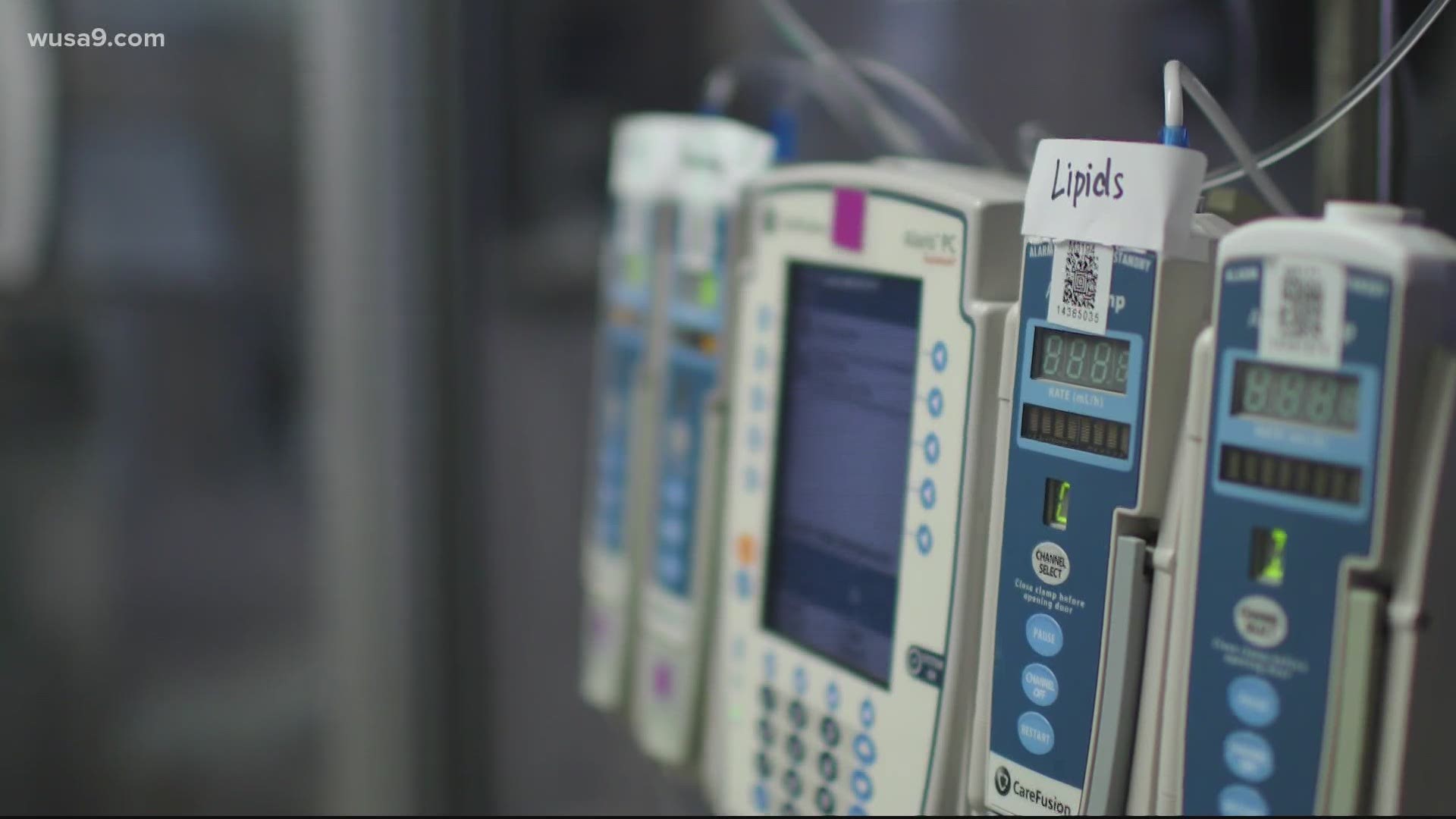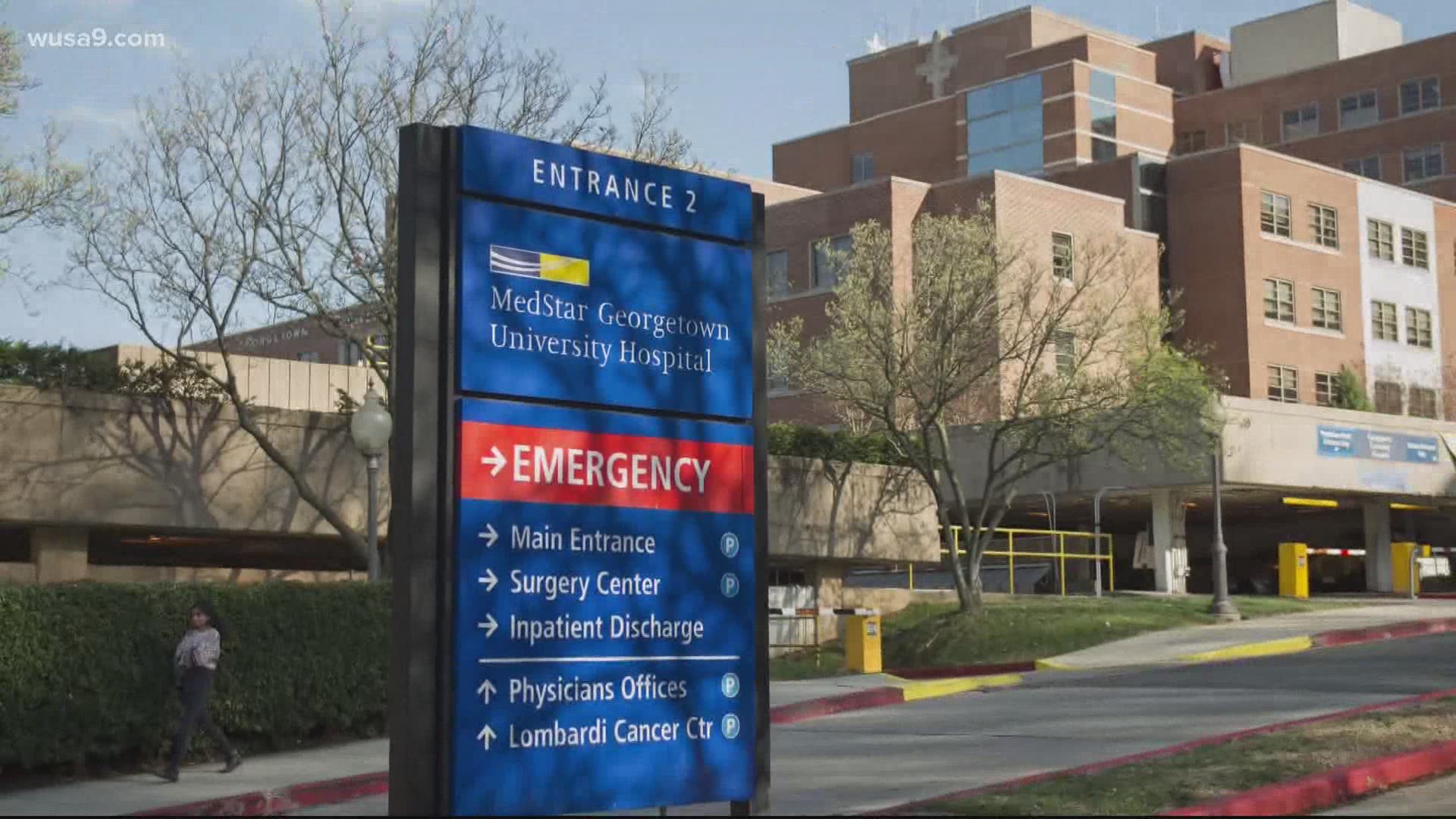MONTGOMERY COUNTY, Md. — The unfinished hospital had no equipment, no furniture, and opened early during a February blizzard, all because pestilence found its way to Montgomery County, and patients began pouring in.
It was 1920 when the first five patients of the flu pandemic arrived at Montgomery County General Hospital. A century later, doctors practicing at what is now MedStar Montgomery Medical Center (MMMC), administered one of Maryland’s first COVID-19 tests.
The medical center founded to treat flu pandemic patients never moved past its initial surge plans for the 2020 coronavirus pandemic. In a building where contemporary patient numbers range from 75-90 people per day, MMMC treated a high of 60 acute COVID-19 patients at the height of the current pandemic in May.
But with Montgomery County reopening and the medical center’s coronavirus numbers plummeting, doctors are now examining adjustments and innovations made during the spring, in order to prepare for a potential second wave at any point this year.
“I think one of our biggest challenges was how to safely and quickly interact with our patients, as the coronavirus pandemic took hold,” Dr. Katherine Byrd, chair of the medical center’s emergency department, said. “So, one of the first things that we did was employ telehealth in the emergency department. That allowed us to have a provider on a tablet speak with a patient about their symptoms, while minimizing our physical interaction, and also conserving our PPE.”
According to MedStar Health, of the system’s 200 converted negative pressure rooms, MMMC had 60 of them – more than a quarter of MedStar’s specialized rooms that prevent virus from escaping into adjacent rooms and corridors.
The 135-bed hospital also ran clinical trials for the drugs Remdesivir and Tocilizumab, as well as a convalescent plasma trial with the Mayo Clinic.
“One of the things we also did in our ICU is move the IV pumps out into the hallway, outside the patients' rooms, so the nurses could access them without having to enter the room with a patient,” Byrd added. “We were the first MedStar hospital to do this, and it was another way to make sure we reduced the number of times we accessed rooms, while keeping our levels of patient care high.”


